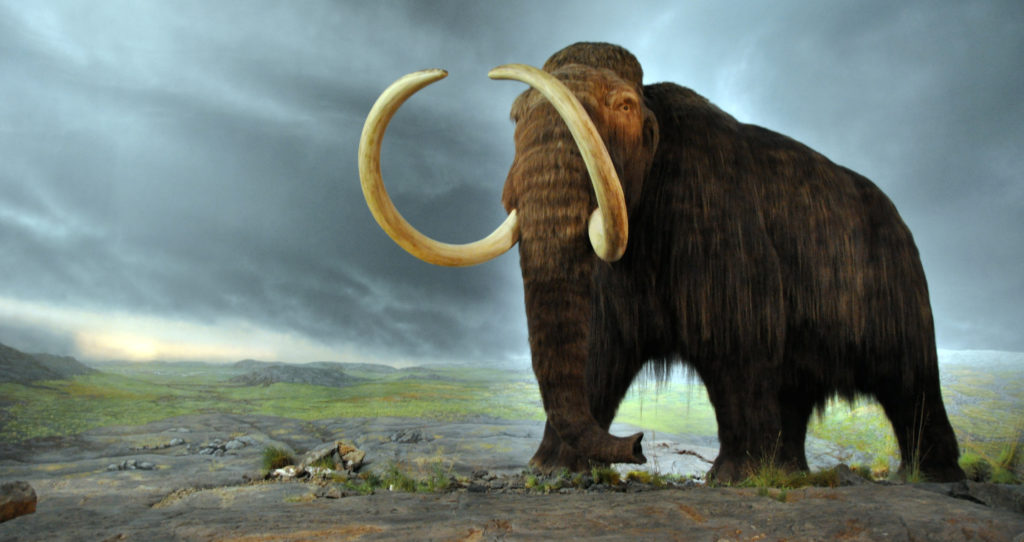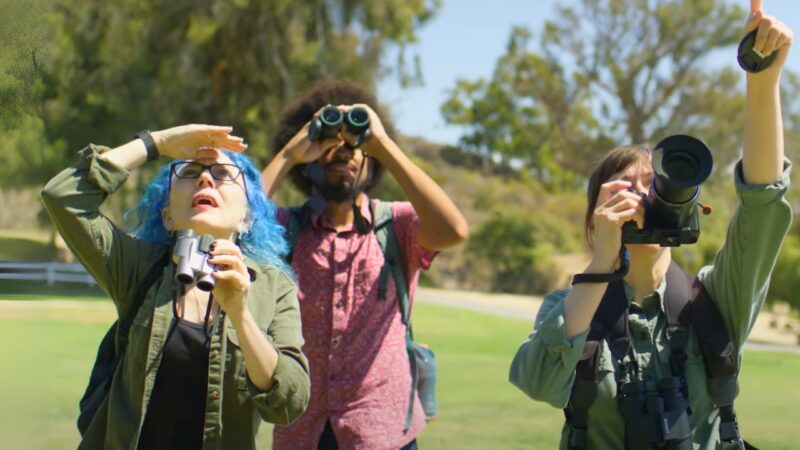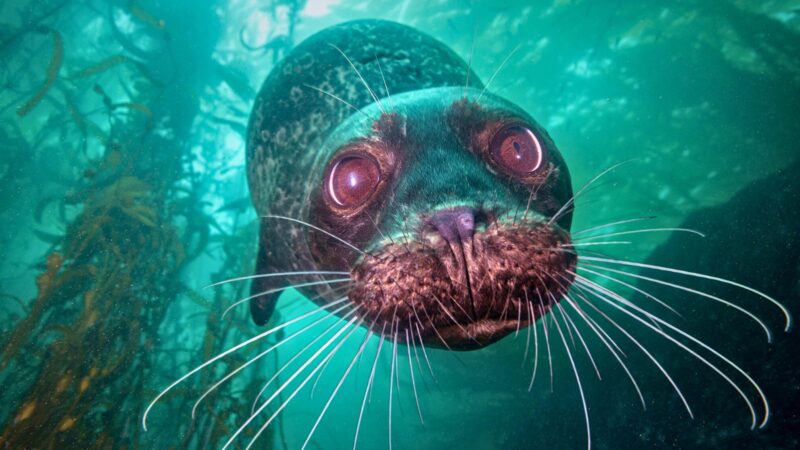
Future of the wooly mammoth
Is Earth’s sixth mass extinction really underway? An expert panel including Stewart Brand, an advocate of de-extinction and co-founder of Revive and Restore, will discuss the causes and consequences of mass species loss and what can be done to protect endangered species.
Is the earth’s sixth mass extinction event really underway?
Extinctions happen all the time—we lose a species but others evolve. It’s how adaptive biology works. But with extinction rates on the rise, experts are sounding alarm bells that Earth’s sixth mass extinction may be underway. And while a meteor crash killed off the dinosaurs 65 million years ago, this time humans are to blame.
On November 10, at the La Brea Tar Pits in Los Angeles—once home to the Columbian mammoth—a panel of experts discussed the causes and consequences of species loss at “Extinction! Fear and Hope at the La Brea Tar Pits.”
This free event was produced by the Natural History Museum and UCLA Institute of the Environment and Sustainability. Expert panelists included: Stewart Brand, president of The Long Now Foundation, Tar Pits’ excavation site director Emily Lindsey and UCLA English professor and author of Imagining Extinction: The Cultural Meanings of Endangered Species Ursula Heise. The discussion was moderated by Jon Christensen, co-founder of LENS.
Brand contends we’re not experiencing a mass extinction—instead, we’re losing distinct populations, but not the species themselves. He’s part of the de-extinction movement, which aims to bring back animals that humans have inadvertently wiped out. I recently talked with Brand to understand what it takes to revive an extinct creature.
How exactly do you turn back the clock for an animal no longer with us?
We are now able to figure out almost the entire genome of species that are long gone, such as the passenger pigeon which died out just over a 100 years ago. With de-extinction we work with the genome of a living species that’s very closely related to the ancient extinct animal. The passenger pigeon is pretty close genetically to the west coast band tailed pigeon. So the idea is to look at their differences, see which genetic differences really matter, and then do the edits so you can move genes of the passenger pigeon traits that you care about over to the embryos of living band tailed pigeons. And over the course of time eventually recreate the passenger pigeon. It introduces another story as far as extinction is concerned—if you care enough and want to spend enough, you can bring back a keystone species like the passenger pigeon.
Don’t ecosystems suffer if they lose a keystone species?
Exactly. The passenger pigeon was a keystone species because they nested in such dense colonies they basically broke up the forest, kind of the way fire does. They also laid down vast quantities of poop that enriched the forest. So instead of having a uniform forest that can be ecologically problematic – a closed canopy forest that goes on forever—they were part of what kept the eastern deciduous forest a rich mosaic. Part of the reason they went extinct was there was deforestation. But the forest has been growing back tremendously, when people hike the Appalachian Trail now they refer to it as the long green tunnel. It’s one of the reasons we think this forest bird would prosper when it’s restored.
So the passenger pigeon has an ecosystem to return to, what about the woolly mammoth?
The woolly mammoth lived in a region called the mammoth steppe—the largest biome on earth—it’s being restored in northern Siberia at Pleistocene Park. It’s where large grazing animals inhabited the arctic and sub-arctic before humans came along with spears and killed them all. When the density of grazers went down to almost nothing and thanks to hunting the mammoths were totally gone, the grasslands reverted to tundra and boreal forest. In climate terms it’s problematic, and bio-abundance went down to about one hundredth of the animal mass.
But increasing the density of animals like musk ox, moose and bison is bringing back that landscape. By the time we recreate woolly mammoths, which should be in this century, the largest uninhabited northern land area will be ready for any cold adapted elephant—which is what the restored woolly mammoth would be.
And this could help us out in terms of climate change?
Yes, because global warming is exacerbated by all of that tundra and boreal forest. As tundra melts it releases carbon dioxide and methane, whereas grassland fixes carbon. Having boreal forest rather than ice and snow confuses the reflectancy and albedo (heat reflecting capacity) of the far north. So in the long term of developing climate stability a restored mammoth steppe, with or without mammoths, would be a good thing to do ecologically for an earth going into over-drive with greenhouse gases. I’m not about to say the woolly mammoths would fix climate change. But they can be part of the vast human effort that’s having to be undertaken in this century to stabilize climate change.
Another good reason to bring back woolly mammoths is to restore the bio-abundance that used to be there. The sub-arctic was pretty much like the Serengeti is now. The African grasslands and savannahs are dense with dozens of large animals that we adore, the whole world used to be like that, especially the far north.
But with human population heading for nine billion people could de-extinction create more human-wildlife conflict?
Well the good news is that in this century, against all expectations, human population is levelling off. And people are moving to cities, we’re at 50 percent urban now heading to 70 or 80 percent by midcentury. Agriculture is also getting more efficient, especially in the developing world, freeing up land for nature and animals.
The existence proof is in Europe where there’s been so much abandoned farm land in the last few decades. The land immediately turns to forest and there’s enough to form wild life corridors. A lot of Europe’s big animals are coming back—the conspicuous ones are wolves—but you have a whole range of animals that are coming back and being welcomed.
So we’d have more big charismatic animals to “ooh and ah” over, but what about the de-extinction nay-sayers?
Some conservationists are concerned this will take away the sting that extinction is forever. And that people might become casual about letting animals go extinct because ‘oh well it’s alright, we’ll bring them back later.’ But we’ve been saying all along is it’s a terrible way to preserve a species you care about, because you won’t get it back exactly, you’ll get an approximation at best. And the costs are tremendous. Another concern is what if this draws money away from traditional conservation efforts that could prevent extinction. Our experience at Revive and Restore is the opposite. We were involved in using genetics to prevent the extinction of the black footed ferret and it’s all one. Being able to prevent extinctions genetically, or reversing it genetically all uses the same technology.
How would you describe your evolution as a conservationist?
De-extinction—this genetic rescue of wildlife—is really a coming home for me. I’ve been a conservationist since I was 10 years old. I got my degree in biology and ecology and evolution at Stanford back in 1960, so for me, this is to a large extent who I am.




